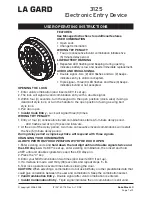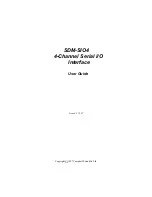
GROUP S.P.A.
MT SBC 01
78
Fig. 1
Fig. 2
Fig. 3
Fig. 2B
Fig. 2A
Art. 3309
Procedure also valid for programming modules 3063B and 3064B wired to Art. 4660C with 4-pole plug-in cable.
WARNING:
•
Modules Art. 4660C normally function as the main external unit
(timed engaged signal).
To set them as a secondary external unit (engaged signal active
for the whole time the riser is in use), set all the selector DIP
switches to ON.
•
When a call is transmitted from the external unit if a busy tone is
heard instead of the ring tone it means that a call to another
external unit is in session.
•
In case of a persistent short-circuit on the bus line, the
external unit emits an intermittent signalling tone.
1. Connect the terminal blocks of modules Art. 3323/3, 3323/4 and
3323/6 (or modules 3063B and 3064B) together and with the
terminal block of unit Art. 4660C using the special cables. Insert
the modules Art. 3323/3, 3323/4 and 3323/6 on the relative
terminal boards (figure 1).
2. On the terminal board of module Art. 4660C connect the power
supply to ~~ and set the switch to the programming position
(red square figure 2A).
Connect the terminal board to module Art. 4660C assembled as
shown previously.
Warning: modules Art. 3323/3, 3323/4 and 3323/6 to be
programmed must already be positioned (figure 2).
Note:
for connection between the terminal board and module
Art. 4660C, it is possible to use the cable Art. 3309, available as
an optional accessory (figure 3) during the programming stage.
3. Set the DIP switch located on the rear of the module
Art. 4660C with the same code assigned to the interphone or
monitor according to the corresponding example shown in the
programming table on page 79.
4. Press the pushbutton to be associated with the interphone call.
A confirmation tone signals that programming has taken place.
5.
After completing programming, set the switch back into
standby position (white) (Figure 2B).
Push-button programming with audio/video unit Art. 4660C and modules Art. 3323/3, 3323/4 and 3323/6
















































